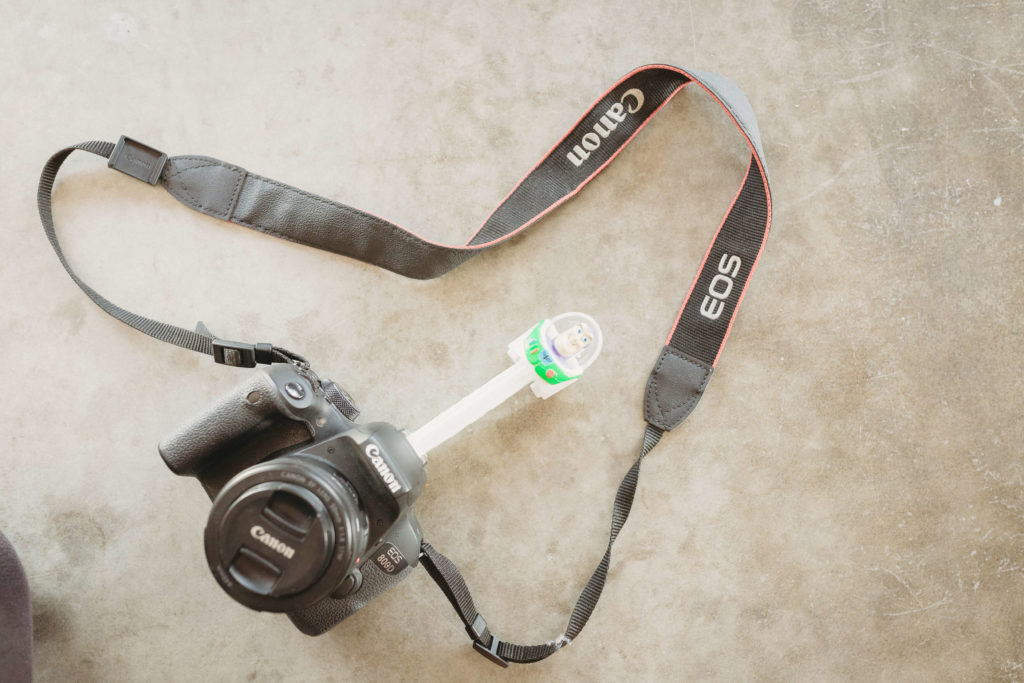
Which Digital Camera Should I Buy?
“Which DSLR camera should I buy?” is a question I hear all the time as a professional photographer! As a photography teacher and educator, I find it really important to break down this question further to really find out what will best suit the individual person’s need.
Getting your first ‘real’ camera or upgrading to something bigger and “fancier” than a phone camera or a point-and-shoot is really exciting. But what’s the right camera for you? How do you filter through all the information out there to make the best decision? You could turn to google, youtube or your uncle Bob to help make your decision… but all the technology and terminology can be so confusing and everyone has a different opinion when it comes to camera tech!
So let’s look closer and discuss, in plain language, to help you make the right choice for your next big camera purchase!
Here are some questions you should consider first:
- Do You Need a Camera with Manual Mode?
Is Manual Mode something you are interested in? Do you want creative control over the images that you create? As a general rule of thumb, a “fancy” DSLR or mirrorless camera used in auto will generally capture images of a similar quality to a regular point-and-shoot camera or these days, even a smart phone camera. So if you plan to stick with auto mode, it may just be worth investing in a high end compact point and shoot or upgrading your mobile/cell phone to a model with a great camera.
The benefit of a DSLR or Mirrorless camera with full manual mode over a compact or mobile phone camera is that you can really control how you craft images and you are only limited by your creativity.
The other main benefit is that you can also add to your camera by purchasing different lenses such as wide angle, telephoto, macro or zoom. Interchangeable lenses are used in different situations so that you can capture all of a landscape or zoom right in on a sports game or create the perfect portrait with beautiful background blur.
If you already own a DSLR or mirrorless camera with manual mode and you’re thinking about an upgrade, give some thought to whether you need to upgrade the body, or your lenses or your skills with using them (sometimes the user needs an upgrade more than the equipment!) Any many photographers can shoot amazing, professional images on an “enthusiast” level crop sensor camera with a basic 50mm lens. It is as much down to the user’s eye and skill.

- Budget? What budget?!
Obviously the main limiting factor is going to be budget. If money were no object, I would just recommend heading towards the high end cameras and you could buy me one too while you’re at it!
An entry level DSLR with a standard kit lens will cost in the region of $500.
Entry level mirrorless cameras start from around $800 for body plus kit lens.
As with all technology, prices go up as you move into mid-range and professional cameras. The key component though, is the lens. Most mid-range cameras are sold with slightly better kit lenses or (as with pro camera bodies) can be bought as body only. This is a preferable option if you already have lenses you want to use with it, or intend buying a better quality lens than a kit lens.
Another option to consider when looking at your options is to review your local second-hand market for camera equipment. It pays to have an idea of what you are looking for first, but very often (especially with a big move towards mirrorless cameras) you can find great deals on well-looked after kit. Lenses are an ideal item to purchase second hand – as providing they have been cared for (and work upon inspection) they just last and last! Camera bodies can be a bit of a different story – it pays to ask the seller the shutter count to ensure you aren’t buying a camera that has been worked into the ground. The second-hand market is a great way to buy a mid-range camera for the price of an entry-level camera, so definitely worth having a look!
As with ALL photography equipment, my personal motto is “buy nice or buy twice”. If you decide to choose the cheapest option of any type of equipment, you will quickly find you need to upgrade your equipment to suit your growing skill set. This will lead to a second purchase if you decided to scrimp on budget in the beginning.
- What is your favourite photography subject?
Have a think about what you plan to photograph the most! If you just want to be able to take control of your camera and take better photos of the usual subjects (family, friends, travel) and you have no intention of ever going pro, and have a small budget… an entry level camera with a nice lens may suit you well.
If you have a particular interest in portraits and you think you’ll be shooting indoors a lot using natural light, then you’re going to need your camera to perform well in low light situations. This specifically refers to how grainy the images turn out when shooting at very high ISO, and enthusiast and pro models will handle this far better than an entry level camera.
If you want to capture fast sports action, you’ll need a very fast shutter so you would need to check the burst rate of a camera body (how many shots the camera can take in one second, measured in Frames Per Second (FPS)). I suggest aiming for at least 5 fps or higher.
If you’re planning to become a professional photographer, it would be worthwhile to consider your future needs as you’re likely to outgrow an entry level camera very quickly.
- Do You Need a Kit Lens?
Even more relevant than the camera body are the lenses you choose, because there are different focal lengths to suit different purposes.
Kit lenses are an inexpensive “starter” lens, and only come with entry level and enthusiast model cameras. If your budget is conservative and you’d like to try photography before committing the bigger dollars that are generally required for better quality lenses, then a kit lens is the way to go. Bear in mind if you are passionate about photography as a hobby or decide to pursue it as a business, you can expect to want to upgrade those kit lenses very quickly.
If you end up deciding to buy a camera body and separate lenses (ie. not kit lenses), I recommend starting with the “nifty fifty” 50mm 1.8 lens as an inexpensive starting point that will give you great range in creatively composing your images.
- Features
So you’ve asked yourself those important questions, and hopefully they’ve enabled you to pinpoint what features you want and need.
DSLR and mirrorless cameras generally fall into three categories, each offering different features, which makes it so much easier to narrow down your options:
Entry Level/ Beginner
- Cheaper, lighter and easier to carry
- Smaller sensor format
- Comes with one or two kit lenses
- Generally has pre-programmed auto functions
- On camera flash
Enthusiast/ Semi-Pro
- Large robust bodies
- Better quality and larger LCDs to review images
- Sometime the same size sensor as entry level/beginner models, sometimes full frame
- Comes with a kit lens or can be bought body only
- Better ISO performance for shooting in low light
- Faster more sophisticated auto-focus system
- More auto focus points
- Better images in low light
- Higher frames per second
Pro Models
- Full frame sensor
- Large robust bodies
- May have weather sealing
- Generally sold body only
- Exceptional ISO performance for shooting in low light
- Faster more sophisticated auto-focus system
- More auto focus points
- Better images in low light
- Higher frames per second
- Much higher image quality
- Sensor Size
What does full frame and crop sensor mean? What is the difference between the two?
Full frame refers to the camera sensor that is the same size as the old fashioned 35mm film sensors, and crop sensors are smaller.
This simply means that cameras with a full frame sensor generally produce better images and have better low light capability (so they perform exceptionally well at much higher ISO settings than the entry level cameras). The downside is they are physically larger and therefore heavier than cropped sensors, and more expensive. For cropped sensors, the main thing to be aware of is that your lenses will have a longer reach.
This in no way means that crop sensor cameras don’t take a good photo… full frame sensor cameras are simply another step above.
In trying to decipher which camera body is full frame or a crop sensor Canon and Nikon label their DSLRs as follows:
Full Frame
- Canon – Full frame (nice and easy!)
- Nikon – FX
Crop Sensor
- Canon – APS-C
- Nikon – DX
- Megapixels
You might be wondering why I didn’t mention megapixels in the list of considerations above. I left it out deliberately, because it’s simply not that important! In the days when digital cameras first appeared, megapixels were all that because we had so few available to us (my first digital camera was 3mp!). But these days digital cameras have 30+MP available (at the time of posting… technology is moving so fast by the time I publish this article there may have been upgrades!).
So what does 30 megapixels even mean?
30mp = 30 million pixels of colour detail
And that’s already more than we need. To put it into perspective, when printing images, you want 240 pixels per inch for crisp imagery. So let’s say you want to print an 11×14 inch image.
(11inch x 240pixels) x (14inch x 240pixels) = 8,870,400 (or 8.87 megapixels)
So that means even a 10mp camera would manage to print as large as most people tend to print for personal use. So today’s cameras are more than enough for our needs and a few megapixels either way are not worth basing your decision on.
- DSLR or Mirrorless?
When it comes to choosing a camera with full manual mode, you have the choice between a DSLR and a mirrorless (or Compact System) camera. DSLRs are based on the old film SLR cameras, and use a mirror system to reflect light onto the camera sensor. Mirrorless cameras are the new kid on the block, and as the name suggests, they don’t have a mirror, which means the light directly hits the camera sensor.
Mirrorless cameras are smaller and lighter than DSLRs which make them a good choice for travel, but they tend to come with a higher pricetag, while DSLRs are cheaper, and offer a greater variety of options in terms of both body and lenses/accessories. DSLR and mirrorless cameras are both available in crop sensor and full frame, and both offer entry level, enthusiast and professional models.
Mirrorless cameras currently only offer a small range of lenses and these tend to be quite pricey, but lens adapters are available which enable DSLR lenses to be used on a mirrorless camera. This is a more cost-effective solution for those who already own a DSLR and are considering making the switch to mirrorless.
Mirrorless cameras are regarded by some as ‘the way of the future’, they are quieter and less prone to camera shake than DSLRs and tend to have more advanced autofocus systems. However, they have a comparatively short battery life compared to most DSLRs, which can be a limitation.
- Which Brand?
There are many brands of DSLR and mirrorless cameras, but for the purpose of keeping it simple we looked at Canon, Nikon and Sony. They’re three of the most popular brands, and they offer the most accessories on the market. Lastly, they’re all fabulous quality and whilst I’m a Canon girl myself, I have lots of photographer friends who happily shoot Nikon or Sony. The best way to choose is to go and hold the camera in your hand, see how it feels to you and if it’s a good fit. You won’t know until you hold it whether you love a canon more than a nikon and vice versa!
DSLR
In terms of DSLRs, generally speaking Canon and Nikon are on a par in quality, and choosing one over the other is a matter of personal taste. One thing to consider is Canon tends to have more affordable options in their lens range than Nikon. However, third party lens suppliers such as Tokina, Tamron and Sigma also make lenses specifically for Nikon and Canon. They are generally more inexpensive whilst still be excellent quality.
Mirrorless
When considering mirrorless, Canon and Nikon both have several decent options on offer, while Sony have positioned themselves as a strong contender with both full frame and crop sensor mirrorless cameras in their range.
Above all, start as you mean to go on. When it comes time to upgrade your camera body, it makes sense to stick with the first brand you settled on, so that you don’t have to replace your entire collection of lenses at the same time.
10. The Latest DSLR and Mirrorless Cameras!
Ok so hopefully by now you have narrowed your choice down considerably!
The following is a list of the most recent Canon, Nikon and Sony camera models, available on the market as at 2020, in each of the three categories:
Beginner/Entry Level
Enthusiast
Professional

Canon and Nikon also offer top range professional level cameras that are up around $10,000+ AUD
Consider this a camera buying guide at which to start your new camera search. Start with determining your budget, consider what you’ll be using your camera for, and ask yourself if you think you’re likely to outgrow an entry level camera.
Happy shopping!
When you have found the camera that best suits you and you now need to learn how to use it, pop on over to:
https://laurenvanierphotography.com/beginner-photography-course-hobart

